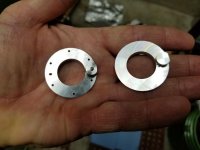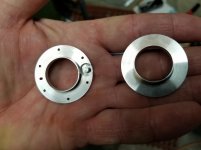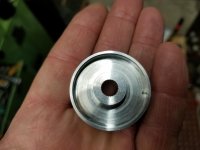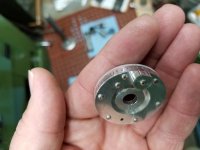My suggestion is to see what you can find used, and/or make your own.
This
BK60 LATHE COLLET CLOSER DRAW BAR FOR 5C COLLETS | eBay is what you need though I do not know if this set will fit your lathe.
My suggestion is to make your own spindle adapter, and if needed modify a drawbar/handwheel to fit. That is what I did when I got my first lathe. I had not used a lathe before and this was before the internet. It was a bit intimidating- but I have been using it ever since.
Picture 1 shows a commercial adapter on the left, the adapter I made in the middle, and on the right is what it was made from- a soft (not hardened) 5 morse taper to 3 morse taper adapter. This was parted off in the lathe using a center in the tang end. The piece was then seated in the headstock, bored to the right diameter, and the the taper put in using the top slide. It was marked so I could replace it in the same location. I drilled a hole for the pin at the end, but later removed it and do not find it necessary.
Picture 2 shows the adapter on the left, the drawbar in the middle (with a collet in the end), and on the right a centering piece for an unknown drawbar. The drawbar that I got with the lathe was too long for the headstock adapter I made, so I disassembled the drawbar, shortened the tube then did the internal threading. Not your typical first threading on a lathe.
Here is a link to someone selling 5C drawbar tubes already threaded.
NEW USA MADE SOUTH BEND LOGAN JET CLAUSING MONARCH LEBLOND LATHE 5C COLLET TUBE | eBay If you went this route you would need to make a centering piece, get a thrust bearing, and buy or make a handwheel. I would strongly encourage a solid handwheel- no holes or handle to catch a finger.
Picture 3 shows some of the 5C fixtures I have made to hold various parts in the lathe.
Pictures 4 and 5 show both sides of parts made with those fixtures.











